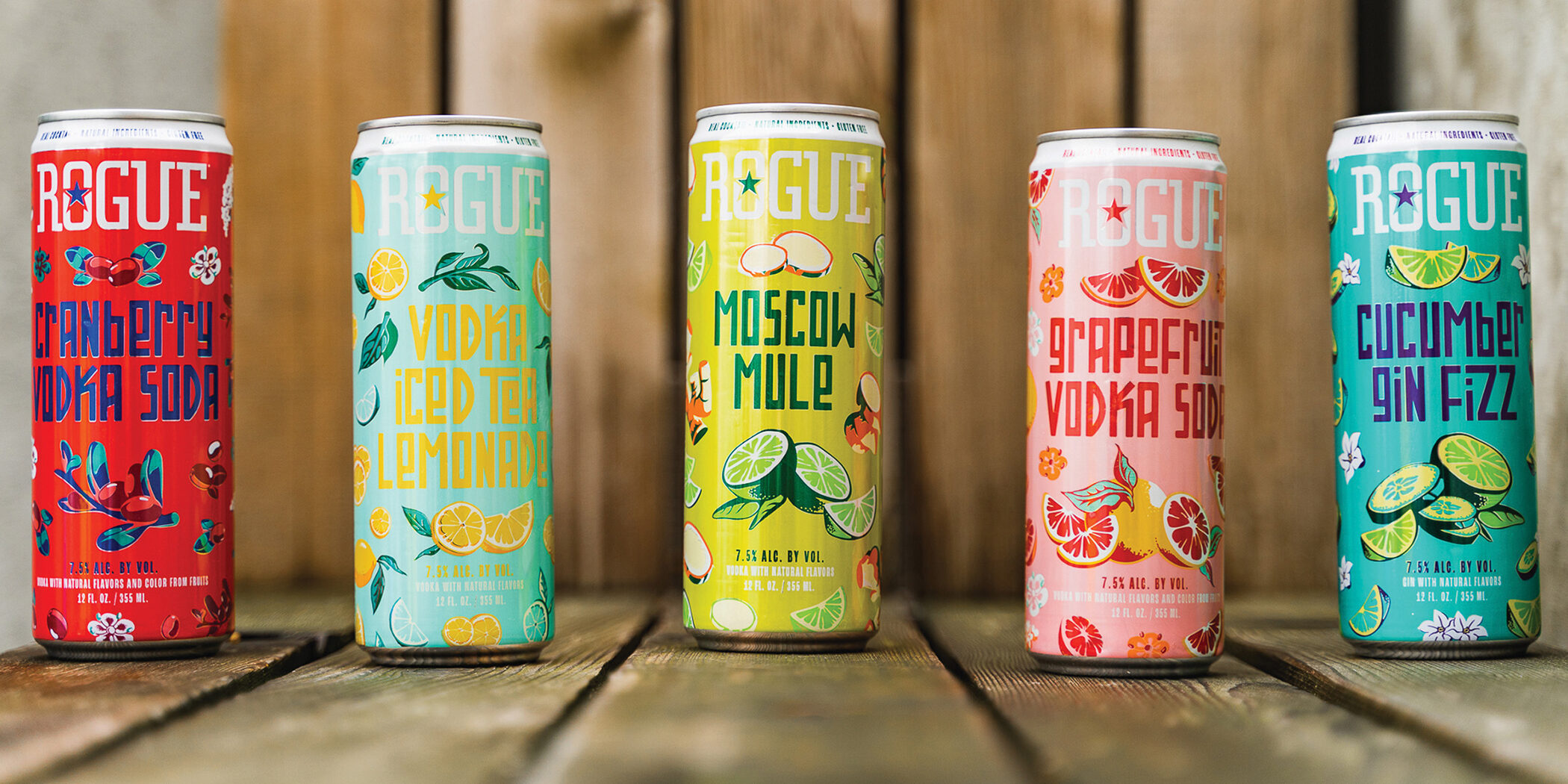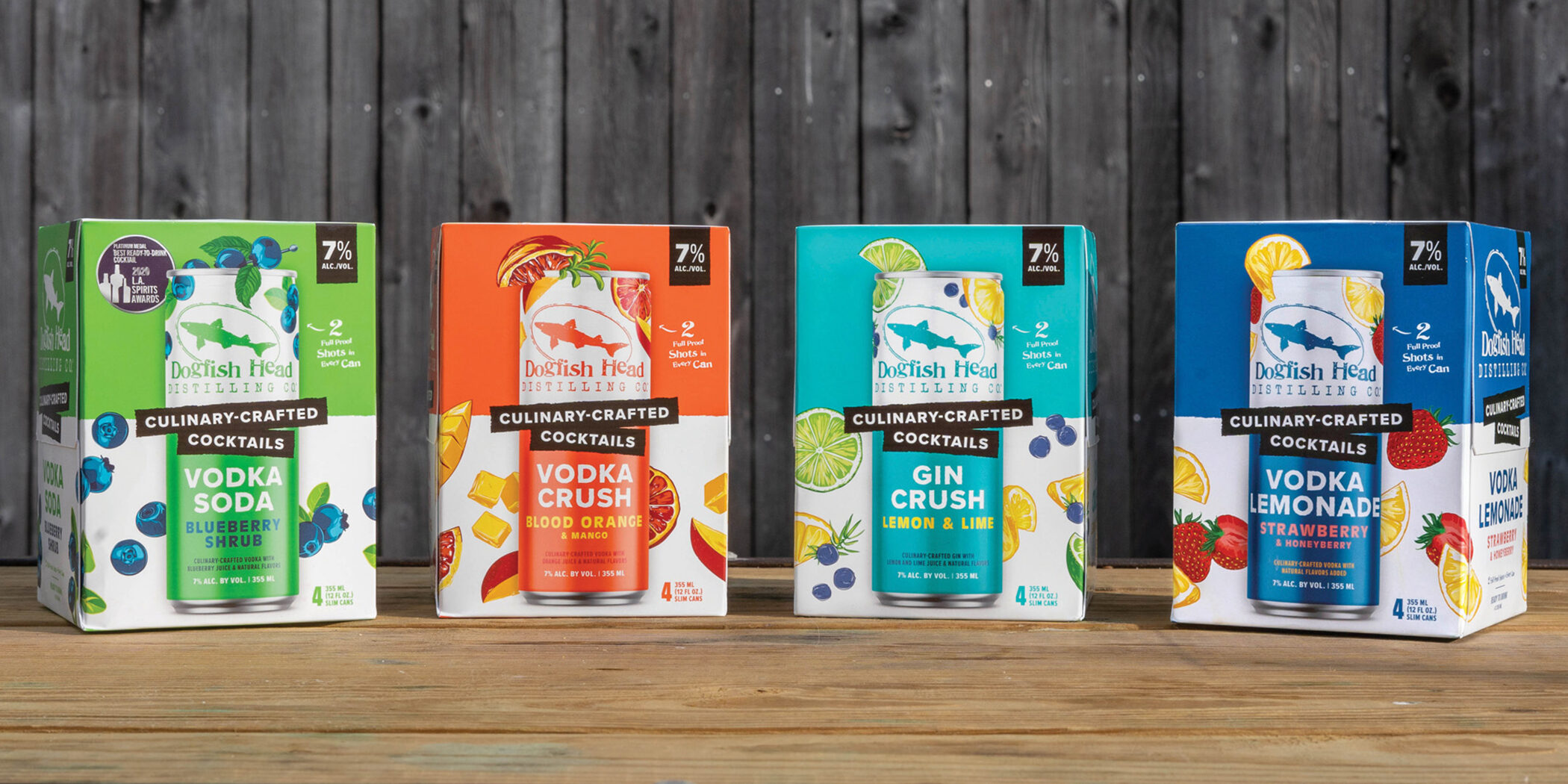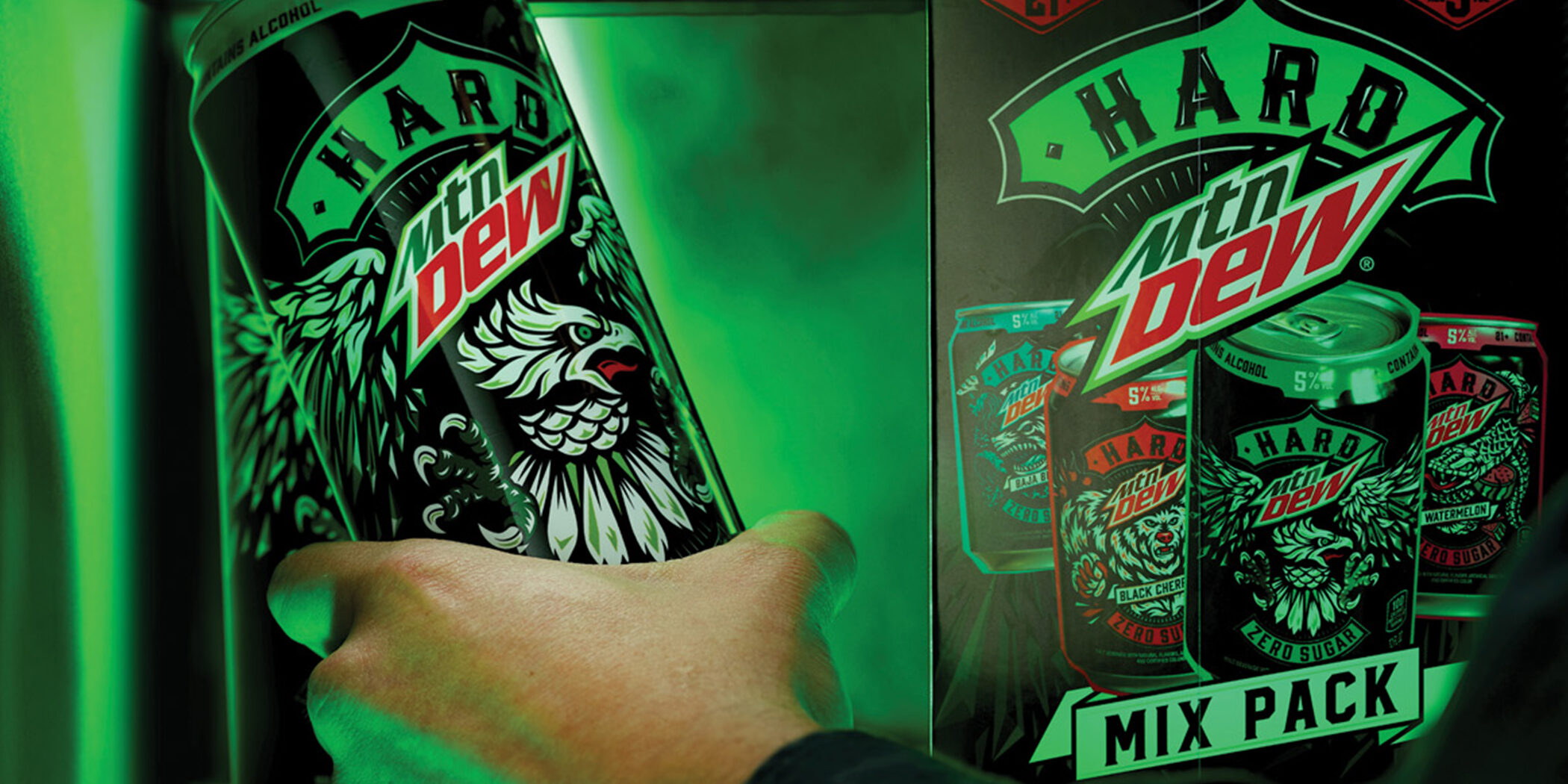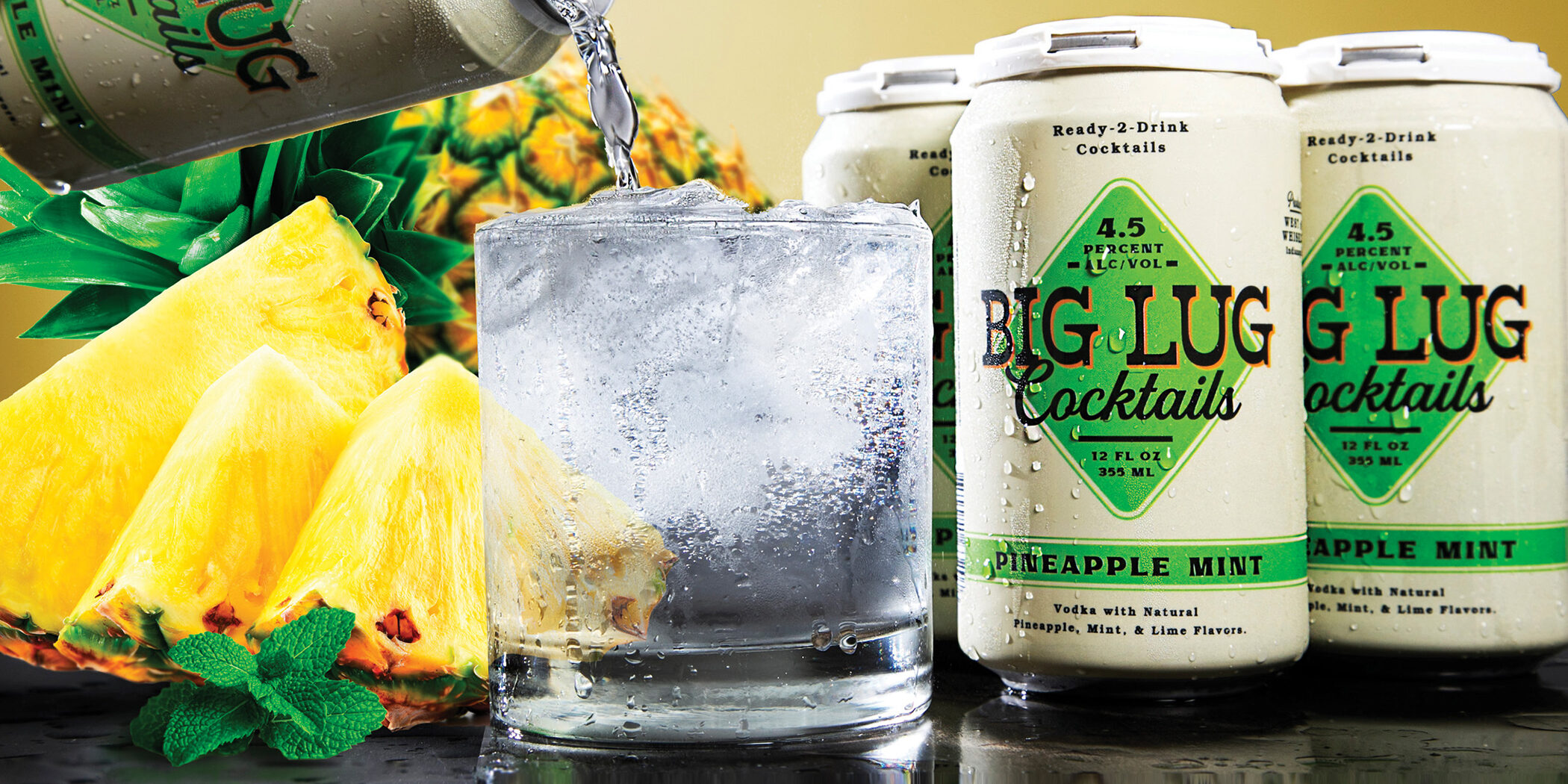A Brand Extension is when you use your brewery’s name on any product in a non-beer category.
When launching a new non-beer product within a Branded House architecture model, you are creating a Brand Extension.
A Brand Extension is when you use your brand equity— visual equity as well as all of the goodwill, recognition and trust your customers have with your brand—to create a new product outside of your main category.
This usually manifests as the parent brand identity along with a simple category description.
Example: A brewery opens a distillery under the same (or similarly-themed) name—Dogfish Head Brewing > Dogfish Head Distilling. Here, you’re leveraging the weight of your parent brand itself to lend credibility to the new product line.
The more established or respected your company, the more effective this will be.
WHEN A BRAND EXTENSION MAKES SENSE
- When you are a well-known generalist brewery.
- When you have a strong parent brand, lots of equity and ardent fans.
- When this product is targeting the same fans and occasions you are already known for.
- When the value props for this new product and your parent brand overlap substantially.
- When you don’t foresee any follow-on Line Extensions for this new product.
- When this new product might not be in the market long term.
Some Advantages
A Brand Extension works well when you’re not known for any one particular style.
This can be a great approach for the generalist brewery who makes a wide variety of styles and isn’t known for any one thing in particular. In this scenario, you have a lot of leeway in what you produce, so a hard seltzer would be just as expected as a Baltic Porter one week or a Dunkel the next. Your fans won’t be thrown off by this new release and may even be expecting, if not outright asking you for it.
A Brand Extension leverages your brand equity.
A Brand Extension can work well when you have a line of parent-branded products that are selling well and you would like to piggy-back on that momentum. The stronger your overall reputation, the easier it can be to keep the hits coming with new releases.
A Brand Extension can reinforce your parent brand’s values and value props.
If this new product aligns with your parent brand’s point of view, promises and value props, then every time someone buys it, you’re reinforcing everything your brand stands for. This invites people to create a deeper, more well-rounded connection with your brand over time.
Caveats
There should be an intuitive link between your parent and this new product category.
You generally want to stay within the same universe as your main category to achieve the best results. If you’re making the best beer in the state, then you could probably make some good whiskey too (from a customer perspective, anyway). If you make the best beer in the state but decide to use your brand name for a new boutique watch company, that might not compute with your customers. The qualities and promises that your parent brand offers should intuitively link to your new extension.
Just to break your brain a bit, run a Google image search for “Cadbury Mashed Potatoes” and “Colgate Lasagna.” We can’t include these images here, but trust me. You won’t be disappointed and it will hammer home the importance of there being an intuitive link between your parent brand and extension.
You can lose focus, meaning and value and reposition your parent brand.
If you’re a premium brand and you release a budget option, what motivation would someone have to continue buying your premium beer? It’s not a question of money and value, but of signaling. People buy premium products for a variety of reasons, but the most important one is that it allows them to signal to the world that they have great taste (or wealth, or status, etc.). You can ruin this positioning and prestige with one improperly released product.
A Brand Extension can reposition your core brand in a negative light. This is especially easy to do when you’re using health claims as a value prop. For example, if you just released a light beer (and are touting its lack of carbs and calories), then just how many calories are in those flagship beers that I’ve been drinking all these years? I might need to reconsider what I’m buying from you.
Know a good mechanic?
While it may sound like a Brand Extension is an easy solution for growth, we need to mention a potential negative side effect. If your new extension isn’t well received, your parent brand’s reputation itself can suffer. Think of this like a referral.
We’re all careful when we refer a service provider to our family and friends (mechanics, lawyers, doctors and even lowly design firms) because the service provided by those we refer is a direct reflection on us. The friend you’re giving a referral to trusts you. And if that mechanic botches your friend’s car repair, that trust
can be damaged.
Likewise, if that new product you put your brewery’s name on doesn’t live up to your standards, your customers can feel let down.




